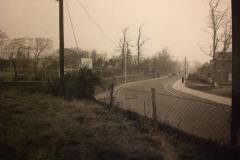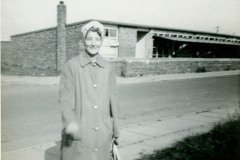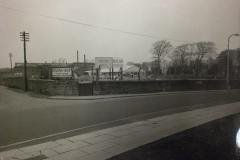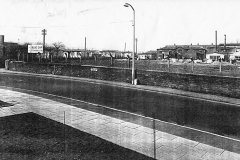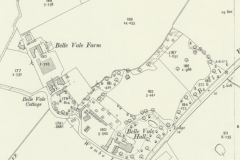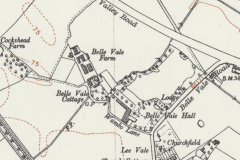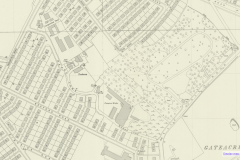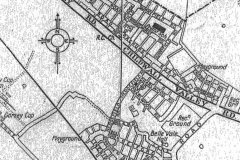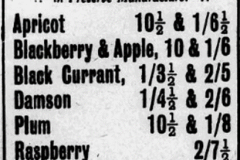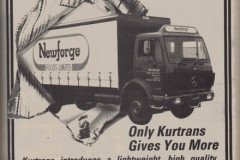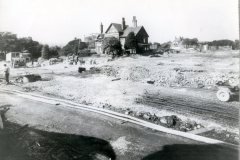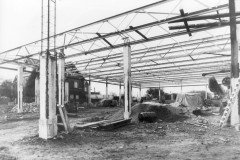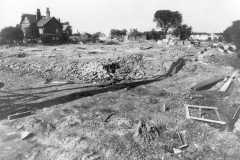Prior to Belle Vale Shopping Center, Morrisons and Belle Vale Park, the land forming these three locations contained Belle Vale Hall, Belle Vale Farm and agricultural land. It appears to have become one whole site after the Second World War due to Liverpool Council (Corporation) purchasing the land. Boundaries have become blurred over the numerous developments (including Prefab development) so its best to look at all the properties below as one whole site (now Belle Vale Park, Morrisons, Belle Vale Shopping Centre and portions of the Hartsbourne estate).
Belle Vale Farm
The earliest newspaper reference to Belle Vale Farm can be found in the Liverpool Mercury in 1853. In 1864 an article reads “BELLE VALE FARM, Gateare, Little Woolton. BYA MR. THOMAS TRAVERSE, Tomorrow (Thursday), lot December, at Eleven o’clock in the forenoon, at the above Farm, ALL the valuable farmstock and produce of Mr. H. Latham who is declining farming. In 1883 the farm is occupied by Mr. James Guy.
Mr & Mrs Harrison were the farmers at Belle Vale Farm from 1915-41. Containing 100 acres (tithe £l5). it had been sold privately to the tenant for £8,500 (Liverpool Daily Post 1917). It was an arable farm and was inherited from a relation. Potatoes and wheat were two of their main crops. They employed five labourers who were all Irish. 3 were permanant labourers and two came each year for the potato harvest. Their crops were sold at Cazneau Street Market & were sent there by train from special sidings at Gateacre station. Most of the farm machinery in use was pulled by horses. They also kept cows, sheep and one pig and often took their livestock to the Woolton Agricultural Show. In 1928 Mr T B Almond of Belle Vale Farm is also referenced as occupying the farm. The farm was sold on compulsory purchase to Liverpool City Council for building purposes. A news article from the Liverpool Daily Post in 1937 notes “the Liverpool Housing Committee proposes to buy under year’s Housing Act is of great beauty and interest Known the Belle Vale Farm”. The farm also owned the land stretching up to Gateacre Village (now containing the Grosewood Road estate) and was sold in 1937 to the corporation. A final article from June 1943 reads “TO CONTRACTORS, TEAM OWNERS. AND FARMERS. THURSDAY NEXT. June 17th, 1943. at 1.15 p.m. BELLE VALE FARM. GATEACRE. NEAR LIVERPOOL. IMPORTANT SALE BY AUCTION of Valuable CONTRACTOR’S WORKING PLANT. including 22 Upstanding WORKING HORSES”
A prefab photo shows Besford Road and Wambo Lane. In the background is Belle Vale Farm (from Binns drawing, look at the distinct chimney), and is known on the later maps as (Liverpool) Corporation Yard.


Belle Vale Hall
Belle Vale Hall stood in Wambo Lane – on the site of the row of postwar houses adjacent to the Belle Vale Road shopping parade – but its grounds extended towards present-day Childwall Valley Road (before that road existed).
Belle Vale Hall was in existence prior to 1826 from the Liverpool Mercury advert detailing “ESTATE of BELLE VALE, situated in the township of Little Woolton, five miles-from Liverpool; consisting of Forty seven Statute Acres”. Hannah Watt, widow of James Watt is listed as dying a Belle Vale in 1834. The property is then listed for auction in 1835. John Bourne the occupier subsequently died in 1838 (referenced in newspapers). One reference from 1840 reads “BELLE VALE, WOOLTON, NEAR LIVERPOOL. 1. 0 be LET, for a Term of Years, with immediate possession, the above excellent COUNTRY MANSION, late the Residence of John Bourne, Esq., deceased”. In 1846 the house is listed as to be let or sold. Listings detail the house to have a Double Coach-house, spacious Drawing-rooms, Dining room, Vestibule, excellent Stabling, Walled Garden, Hothouses, Greenhouses, and extensive Pleasure Grounds, situate near the high road leading from Gateacre village to Tarbock.
The Little Woolton Tithe Map of 1848 indicates the owner of Belle Vale Hall as James Mulleneux, and the 1851 Census tells us that he was a merchant, born in Liverpool in about 1795. He lived at Belle Vale Hall with his wife, 6 children, a grandson and 6 servants. Liverpool trade directories indicate that he was a ‘liquor merchant’
The Mulleneuxs were still at Belle Vale in 1861, but by 1871 a new family was in residence: the Harrisons. The 1871 Census describes Thomas Harrison (aged 27, and born in Liverpool) as a “Merchant & Shipowner”, living at Belle Vale Hall with his wife, 3 children and 5 servants. In 1881 the description was “African Merchant & Shipowner”. By 1901 he was retired, but still living at Belle Vale Hall with his wife, 3 grown-up sons and 4 servants. The 1911 Census form for Belle Vale Hall was completed by Sara Harrison (Thomas’s widow).
Belle Vale Hall became the registered office of Belle Vale Orchards Ltd, the farm to the north being a fruit farm. The jam factory was, in the 1930s and 40s, operated by John Irwin Sons & Co Ltd. The earliest newspaper reference to Belle Vale Jams can be found in 1930, with a notable reference in 1934 of “BELLE VALE” JAMS OPENED BY COUNTESS OF SEFTON”. There are references to Irwin’s Belle Vale Jams up until 1949.
At some point during this period, Belle Vale Hall’s gardens were designated as a Public Open Space after World War 2, to serve the new residential district that was being created at that time (including one of the country’s largest prefab housing estates). It had originally been part of the grounds of Belle Vale Hall, with other parts of the park adjacent to the Shopping Center made up from farming land. The sandstone entrance posts on Belle Vale Road to the hall are still in place and form an entrance to the park. A previous datestone built into the wall close to the present row of shops has since become damaged, and its true origin is questionable owing to its excellent condition for such an old stone in an outside environment! But it has been posted here for posterity as it no longer exists due to damage pre-2008.

Above: The entrance to Belle Vale Park featuring the old mansion lodge
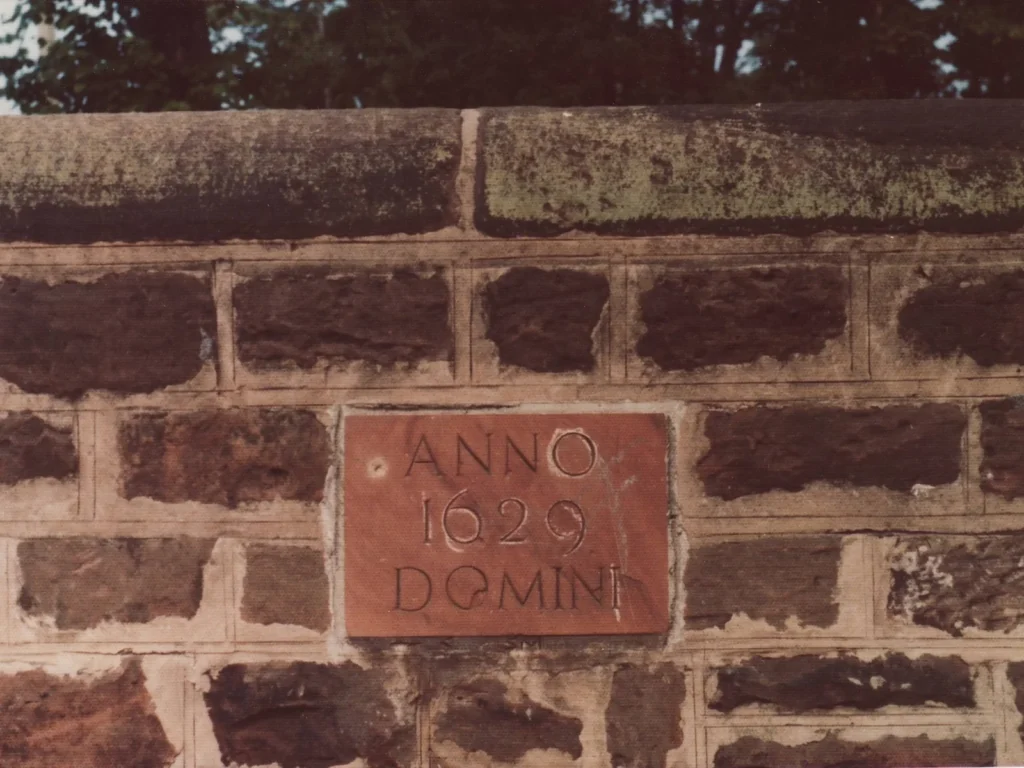
Above: A questionable datestone that no longer exists due to damage (pre 2008). A painting from 1911 by F Beattie makes direct reference to this datestone, except instead of 1629, it reads 1829… A much more likely date! on closer inspection it seems the datestone may have been altered, with the outline of an 8 visible in lighter colour below the 6, and darker colour on by the tail of the 6. It could also be possible the datestone was replaced entirely.
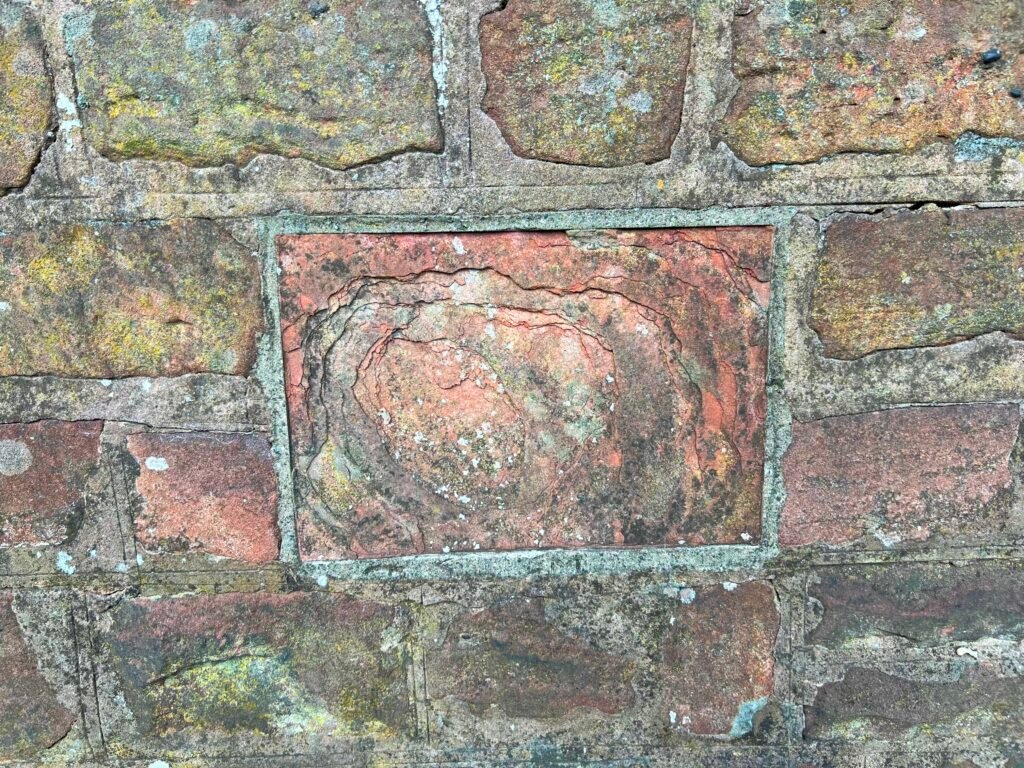


1911 Painting by F Beattie of Belle Vale Hall Entrance, including reference paintings of two notable elements, including the datestone in the wall.

Above: The drawing of belle vale Hall is taken from corner of Belle Vale Road and Wambo Lane (see straight edge of building and outhouses behind).

Above: A painting by F Beattie of Belle Vale Hall Farm, 1911. Looking at maps, it appears to be painted from the field behind Wambo Lane facing the rear of Belle Vale Hall.
The hall was demolished in 1929 to make way for factory infrastructure (apart from one sizable outhouse visible in a 1960s photo). By the 1960s the factory has changed its name/ownership to Blue Cap Foods, which became Newforge Foods. The Blue cap factory was demolished in 60s. On a 1944-73 map the Belle Vale Hall estate is gone and Shows on a map as ‘Preserve Works’.
After World War II, Newforge Foods, part of the Fitch Lovell group, was awarded the license to produce the product in the U.K. at its Belle Vale factory, Liverpool, where it stayed until production switched to the Danish Crown Group (owners of the Tulip Food Company) in 1998 after five decades of producing Spam. The factory closed and is now a Morrison’s but houses a plaque which pays homage to the factory in the store.

Above: Belle Vale Spam factory

Above: (C) Alamy, 1997. Distribution Manager Eddie Clarke, in the only factory producing Spam in Britain shut with the loss of 140 jobs.
The city council (who owned the freehold of the Newforge site) granted a new lease of the factory and the shopping centre to Mars. Mars then granted an underlease of the Newforge site to Morrisons.
Belle Vale Morrisons supermarket was the first of the brand to be built in the city. Morrisons redeveloped the factory site with a new 74,000 sq ft supermarket that fronted onto the shopping centre car park. Liverpool City Council played a key role in putting all the new agreements in place and retained a share in the future rental value of the shopping centre.
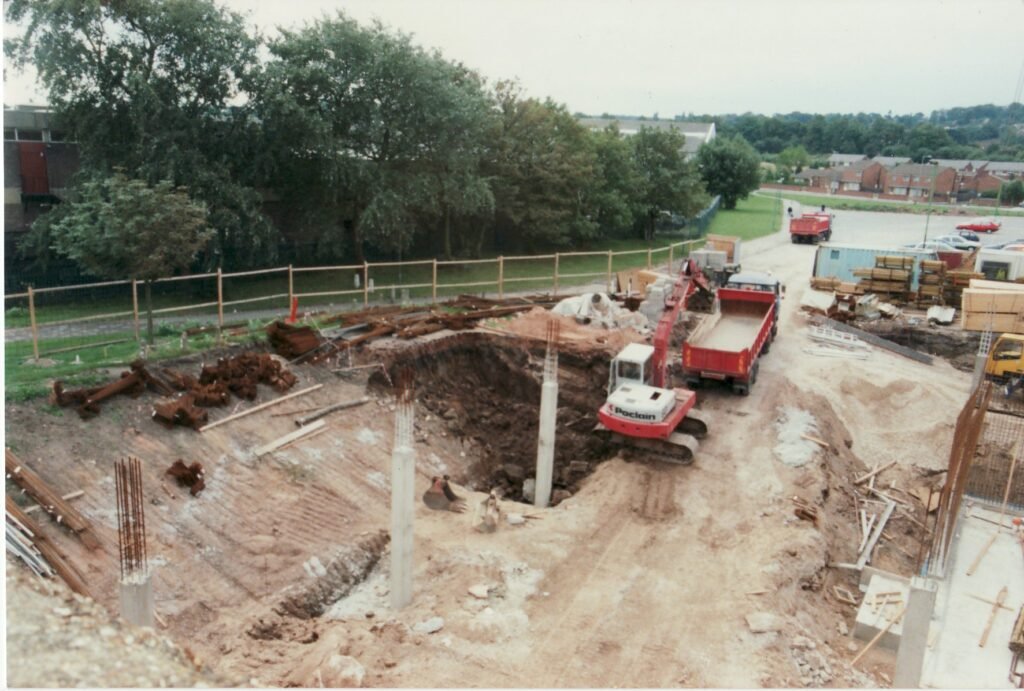
Above: View of the shopping center expansion in 1990, notably without Morrisons in the background. (C) Gateacre Society.

Above: View of the shopping center expansion in 1990, notably without Morrisons in the background. (C) Gateacre Society.
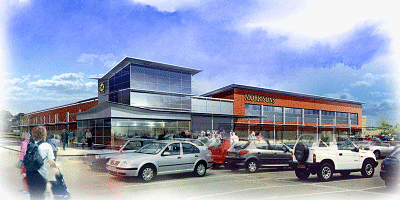

Above: An artist’s impression (C) Unknown), and the actual Morrison building early 2000s (C) Gateacre Society

Treehaven
Another dwellinghouse that sat between Belle Vale Cottage and Belle Vale Farm was Treehaven. Although there are a few photos, not much is known about this building. Although by 1942 Treehaven still occupied (adverts in newspapers for servants). Surrounded by Prefabs, Treehaven appears to have also been compulsorily purchased by Liverpool Corporation or developed by The Blue Cap factory. The Treehaven photos are taken roughly from the location of where Belle Vale Cottage was located, with Treehaven from the side (front looking out leftwards), Charlwood Road prefabs next to the corporation yard to the right and BV Farm house in the far center background (see chimney). The site now forms part of Morrisons Car Park.
Belle Vale Cottage
In 1844 Belle Vale cottage is listed to be let. Apply to T. GORE, on the Premises. Belle Vale Cottage is labelled ‘The Cottage’ on a 1940s map and is directly adjacent to where Belle Vale Hall property ended. The site now forms part of Morrisons Car Park.


